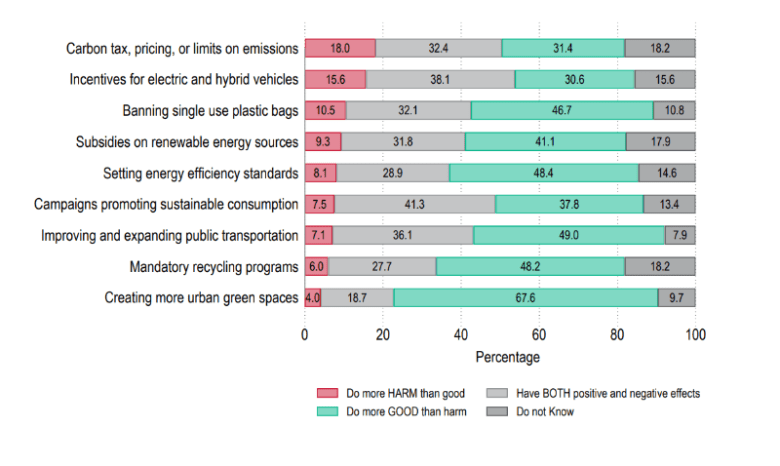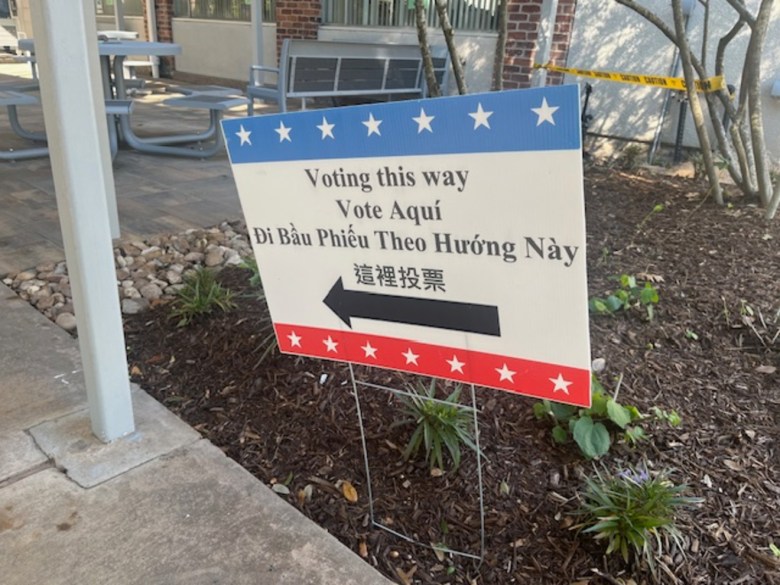Survey Says Most Residents Want Practical Solutions to Climate Change
Texans have grown accustomed to heatwaves and deadly floods, and, while a hurricane can’t be stopped by a panel of politicians, residents who vote on both sides of the aisle want the government to implement climate change policy solutions, according to a University of Houston Hobby School of Public Affairs survey released last week.
More than 86 percent of about 5,000 survey respondents believe in the effects of climate change, but their thoughts on the causes vary along party lines. About 48 percent of Democratic respondents attributed climate change mostly to human activities, compared to 13.3 percent of Republicans, who attributed it mostly to natural environmental changes.
About 3.7 percent of respondents deny that climate change exists, and 57.7 percent identify the oil and gas industry as one of the main culprits.
Republicans have traditionally not listed climate change as a priority and almost 70 percent say an important consideration for them in any climate policy proposal is keeping consumer costs low, according to a Pew Research Center study released last year and cited in the UH Hobby School survey.

So climate change is “a thing,” but what can be done to address it?
Maria Perez Arguelles, lead researcher on the report and a research assistant professor at the Hobby School, said the Texas Legislature considered several measures during its most recent session.
“Lawmakers passed more bills that were aimed at strengthening the power grid or expanding the reliability of energy supply,” she said. “But other bills targeting renewable energy development and those that targeted wind and solar installations, for example, didn’t pass.”
The survey polled residents of nine counties surrounding Houston between August 11 and September 4.
Overall, respondents showed stronger support for policies promoting energy efficiency — such as improving energy use in homes, vehicles, and factories — over more technical solutions like carbon capture. These solutions are seen as more effective and more likely to garner bipartisan support, the report states.
“What these results suggest is that those policies that promote efficiency and visible community benefits — things that people can visualize and see translated into everyday lives — have a higher chance of gaining bipartisan support in the Greater Houston area,” Perez Arguelles said.
Houston and Harris County have climate action plans to address a steady rise in federally declared disasters, including Hurricane Harvey in 2017, severe floods, winter storms, and wildfires.
“These repeated events have underscored the region’s vulnerability and highlighted the urgent need for stronger infrastructure, flood protection, and emergency response systems,” the Hobby School report states.
At a press conference this week on emergency preparedness, County Judge Lina Hidalgo lauded the “first of its kind in the nation” community-focused Climate Justice Plan, adopted earlier this year. The plan’s chief goals are to deploy electric vehicles and charging stations; improve energy efficiency in county buildings; and produce green spaces and native landscaping.
“I’m not going to pretend like there are not challenges right now,” Hidalgo said. “We all know that FEMA has been taking some hits and nobody is sure how they will respond when we need them. There’s a major grant for solar power that we were awarded by the federal government that we were told is not arriving anymore. That’s another challenge, and of course, there are certain things in the budget that just passed that can have an impact on emergency response efforts.”

Within 24 hours of Hidalgo’s press conference, the federal government shut down, adding to the uncertainty facing states and counties that are prone to natural disasters.
Harris County’s Climate Action Plan, adopted in 2023, aims, among other things, to reduce greenhouse gas emissions by 40 percent by 2030 through reductions from county buildings, fleet and commuting, procurement, and waste management.
“I want to make sure folks know that we have strong partnerships,” Hidalgo said at the press conference as she stood at a podium with meteorologist Jeff Linder, Harris County Fire Marshal Laurie Christensen. Homeland Security and Emergency Management Coordinator Mark Sloan, and American Red Cross Regional CEO Shawn Schulze.
“There are many things we can’t control about emergencies and disasters, but one thing we can control is the partnerships. That is what a smooth response depends on,” she said.
As city and county leaders work to address climate change through action plans and policies, they’re also reminding the public of how to stay informed and how to best respond when a disaster hits. Although Harris County hasn’t had an active hurricane season this year, tropical storms are expected through the end of November. Some regions of the county are experiencing drought conditions, Christensen said.

At the September 30 press conference, Christensen urged the public to prepare for disasters on “blue sky days” like the ones Houston has experienced lately.
“Have your chimneys cleaned,” she said. “Make sure that you’ve got a five-foot radius around your fireplace. If you’re burning outside and you’ve got a nice fire pit that you bought at a box store, make sure you have water around it so you can disperse and put the water on it and get the fire out.”
The fire marshal further suggested that families practice evacuation plans for their homes. Several of the speakers at the press conference reminded residents to sign up for Ready Harris emergency alerts.
Houston released its first-ever Climate Action Plan in 2020. The CAP, overseen by the Office of Recovery and Resilience, was part of the Resilient Houston strategy to reduce greenhouse gas emissions, achieve carbon neutrality by 2050, and improve urban resilience. It’s cited in the UH report as one of the policy initiatives residents prefer.
The CAP focuses on transportation, energy transition, building optimization, and material management. A two-year update in 2022 highlighted some progress, including a 37 percent drop in emissions since 2005 and 92 percent of municipal facilities powered by renewable energy.

Among survey respondents, the most popular policy solution to reduce carbon emissions was to make factories and energy systems more efficient.
“Generally, we observe significant partisan differences in perceptions of carbon reduction strategies,” the report states. “Democrats consistently show higher support for all measures, especially efficiency improvements and cleaner fuels, while Republicans are less supportive of all options, especially carbon capture. We also find that Independents and non-affiliated respondents in the Greater Houston area typically align closer to Democrats.”
This article appears in Jan 1 – Dec 31, 2025.
Related

Reign Bowers is an outdoor enthusiast, adventure seeker, and storyteller passionate about exploring nature’s wonders. As the creator of SuperheroineLinks.com, Reign shares inspiring stories, practical tips, and expert insights to empower others—especially women—to embrace the great outdoors with confidence.




Post Comment